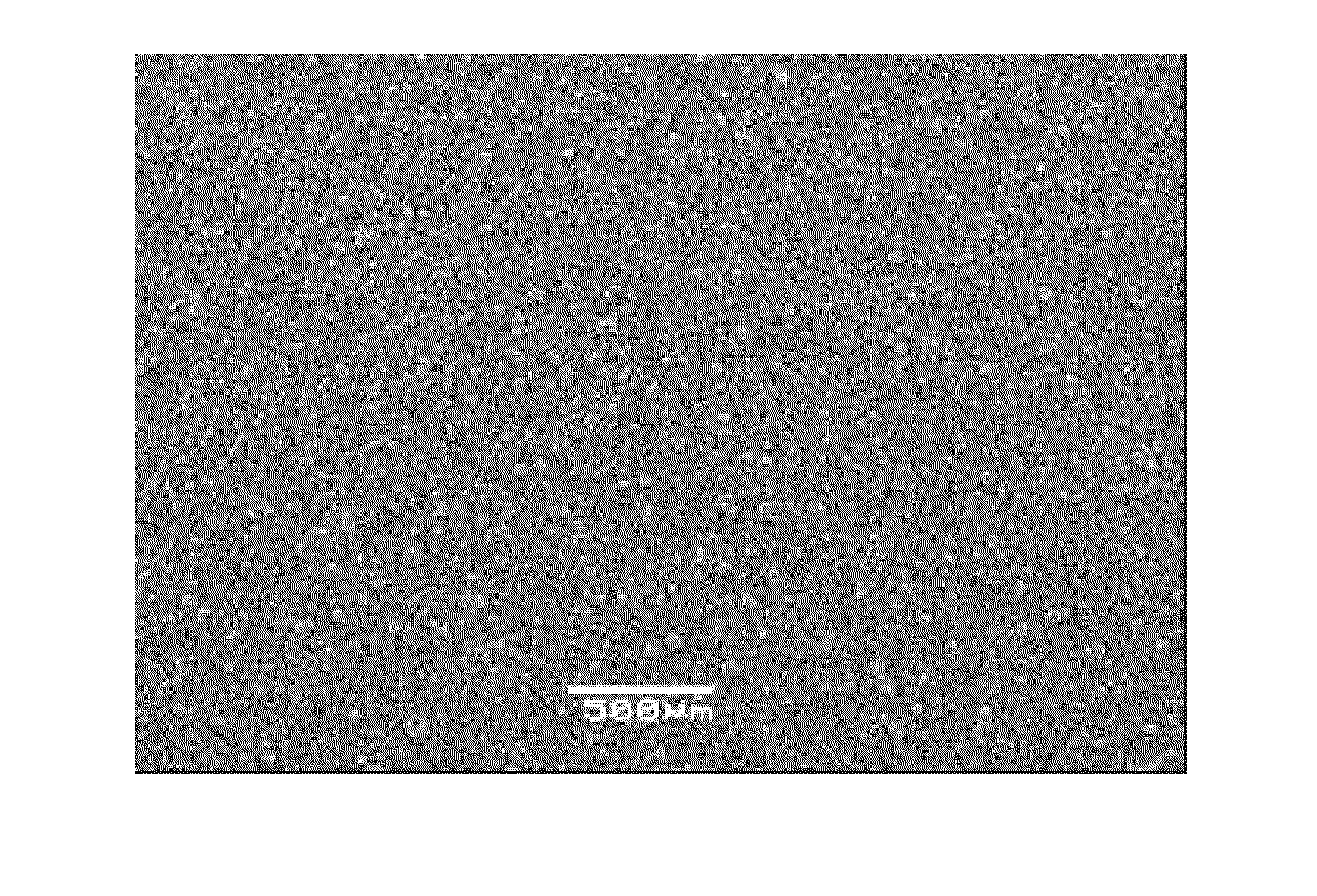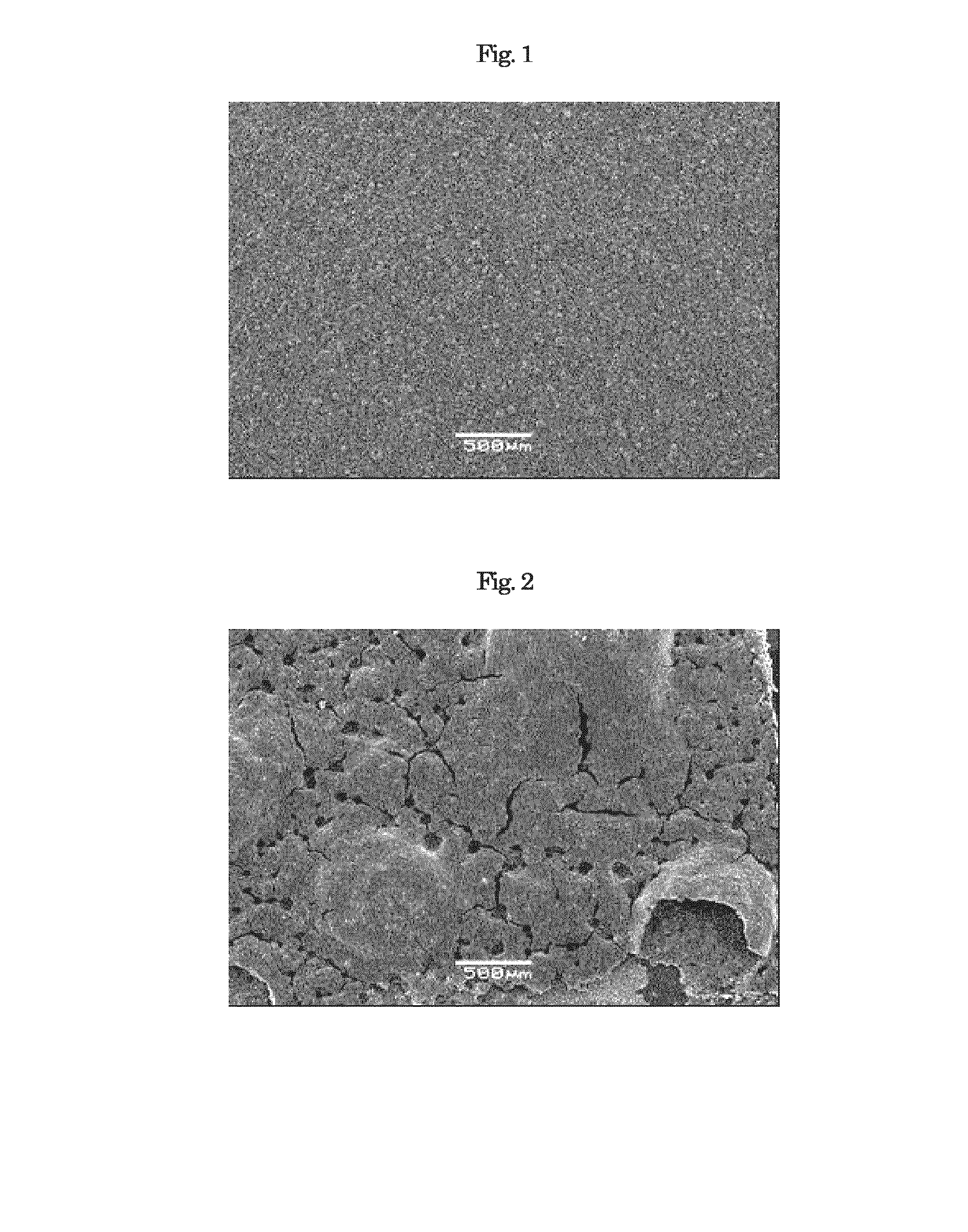Electrode mixture, electrode, and lithium secondary battery
- Summary
- Abstract
- Description
- Claims
- Application Information
AI Technical Summary
Benefits of technology
Problems solved by technology
Method used
Image
Examples
production example 1
Production of Lithium Mixed Metal Oxide
[0089]In a polypropylene beaker, 83.88 g of potassium hydroxide was added to 200 ml of distilled water and dissolved by stirring to prepare an aqueous potassium hydroxide solution (aqueous alkali solution). Then, 16.75 g of nickel(II) chloride hexahydrate, 14.25 g of manganese(II) chloride tetrahydrate and 1.491 g of iron(II) chloride tetrahydrate were weighed out and added to 200 ml of distilled water in a glass beaker, and were dissolved by stirring to obtain a nickel-manganese-iron mixed aqueous solution. While stirring the aqueous potassium hydroxide solution, the nickel-manganese-iron mixed aqueous solution was added dropwise thereto, whereby a coprecipitate was generated to obtain a coprecipitate slurry. Subsequently, the coprecipitate slurry was subjected to filtration, and the resulting solid was washed with distilled water and dried at 100° C. to collect a coprecipitate P1.
[0090]Then, 3.0 g of the coprecipitate (P1), 1.634 g of lithium...
production example 2
Production of Aqueous Emulsion
[0092]In 25 parts by weight of water, 0.7 parts by weight of sodium dodecylbenzene sulfonate, 0.005 parts by weight of ferrous sulfate and 0.8 parts by weight of sodium hydrogen carbonate were dissolved, and the resulting solution was charged to a polymerization tank, the atmosphere of which was previously replaced with ethylene. Subsequently, 2 parts by weight of vinyl chloride was charged to the tank, and the mixture was stirred and emulsified. Thereafter, the polymerization tank was pressurized to 4.9 MPa by ethylene gas and heated to 50° C. Polymerization was performed over 8 hours while continuously adding 18 parts by weight of vinyl chloride, 1.5 parts by weight of a Rongalite aqueous solution and 8.0 parts by weight of an aqueous solution of ammonium persulfate with keeping an internal temperature at 50° C. Thereafter, excessive ethylene was discharged until the tank pressure was decreased to the atmospheric pressure to obtain an aqueous emulsion...
example 1
[0093]Using the aqueous emulsion (content of copolymer component; 50% by weight) obtained in Production Example 2 and carboxymethylcellulose (CMC, manufactured by Aldrich Chemical Co.) as a thickening agent, they were mixed so that copolymer component of the emulsion:thickening agent be 1:9 (weight ratio), and water was added thereto to prepare a water-based binder. Subsequently, an electrically conductive material (a mixture of acetylene black and graphite at a ratio of 9:1) was added to the water-based binder and mixed with a dispermat (manufactured by EKO Instruments Co., Ltd.) to prepare an electrically conductive paste. Next, the lithium mixed metal oxide 1 produced in Production Example 1 was added to the electrically conductive paste and mixed with a dispermat (manufactured by EKO Instruments Co., Ltd.) to obtain a mixture. Polyacrylic acid (manufactured by SUMITOMO SEIKA CHEMICALS CO., LTD. AQUPEC HV-505E) was added thereto so as to have a weight ratio of water-based binder:...
PUM
 Login to View More
Login to View More Abstract
Description
Claims
Application Information
 Login to View More
Login to View More - R&D
- Intellectual Property
- Life Sciences
- Materials
- Tech Scout
- Unparalleled Data Quality
- Higher Quality Content
- 60% Fewer Hallucinations
Browse by: Latest US Patents, China's latest patents, Technical Efficacy Thesaurus, Application Domain, Technology Topic, Popular Technical Reports.
© 2025 PatSnap. All rights reserved.Legal|Privacy policy|Modern Slavery Act Transparency Statement|Sitemap|About US| Contact US: help@patsnap.com


